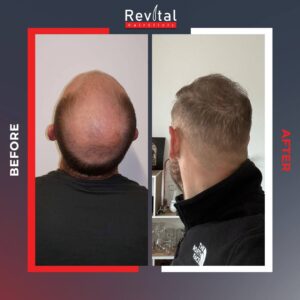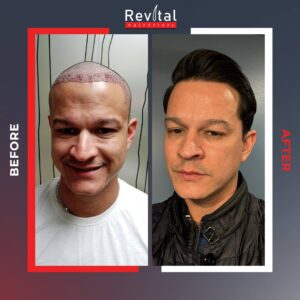Do Transplanted Hair Look Natural?
One of the most common questions individuals ask when considering a hair transplant is whether transplanted hair will look natural. The goal of any successful hair transplant procedure is to restore a full, natural-looking hairline and blend the transplanted hair seamlessly with the existing hair. Fortunately, with advancements in hair restoration technology and techniques, transplanted hair can look incredibly natural, and most patients are highly satisfied with the results.
In this article, we will explore the factors that contribute to the natural appearance of transplanted hair, the techniques used to achieve a seamless look, and what you can expect from the results.
What Makes Transplanted Hair Look Natural?
The key to achieving natural-looking transplanted hair lies in the technique, skilled surgeon, and individual characteristics of the patient’s hair. Several factors contribute to how natural the final results will appear:
- Hairline Design and Angle
One of the most important aspects of achieving a natural look is the design of the hairline. The hairline must be tailored to match the patient’s facial features, age, and desired outcome. A natural hairline should have a slight irregularity with softer angles, mimicking the natural patterns of hair growth.
Additionally, the angle at which the hair follicles are transplanted is crucial. If the follicles are not angled properly, the hair can look unnatural and stand out from the existing hair. A skilled surgeon will ensure the transplanted hair grows in the same direction as the natural hair, giving it a seamless and natural look.
- Technique Used (FUE, DHI, Sapphire FUE)
The method used for the hair transplant also plays a significant role in how natural the results will look. Some of the most popular methods include:
- FUE (Follicular Unit Extraction): In this technique, individual hair follicles are extracted from the donor area and transplanted into the recipient area. This method leaves minimal scarring and allows for a precise, natural-looking hairline. Since individual follicular units are transplanted, the result often looks more natural than older methods.
- DHI (Direct Hair Implantation): DHI involves a more advanced method of implantation where hair follicles are implanted directly into the recipient area using a specialized tool. This technique is known for creating a more natural look, especially for hairlines, as it allows for greater control over the depth and angle at which the hair follicles are placed.
- Sapphire FUE: Sapphire FUE uses a special blade made of sapphire to create the incisions for the transplanted follicles. This allows for more precise implantation, minimizing damage to surrounding tissue and increasing the chances of achieving a natural look.
Each of these methods, when performed by a skilled surgeon, can yield highly natural-looking results.
- Individual Hair Characteristics
The natural appearance of transplanted hair also depends on individual hair characteristics, such as:
- Hair Type and Texture: Coarse, straight hair may provide a denser and more voluminous look, while fine, wavy hair can blend more easily into the scalp.
- Color Match: The color of the transplanted hair should closely match the natural color of the existing hair. The transplanted hair follicles are usually taken from the patient’s own scalp, so color matching is not an issue, but the surgeon will still ensure that the placement and density match the surrounding hair.
- Hair Density: The density of transplanted hair should resemble the natural density of your hair. Too much or too little hair can result in an unnatural look. A skilled surgeon will aim for a natural distribution of follicles to achieve the optimal density.
How Do Surgeons Ensure Natural Results?
Several techniques are employed by experienced hair transplant surgeons to ensure the transplanted hair looks natural:
- Using Follicular Units
In modern hair transplantation, the technique of transplanting follicular units (small groupings of 1 to 4 hairs) is used. This is a crucial step in ensuring the hair grows in a natural, undetectable pattern. Follicular units mimic the way hair naturally grows, preventing the appearance of large, unsightly plugs.
- Creating a Soft, Gradual Hairline
A natural hairline is not a straight line; it has soft curves and irregularities that resemble natural growth patterns. Surgeons carefully design the hairline, using single hair follicles at the front for a more natural look and grouping follicles behind it for increased density. This allows for a gradual transition from the hairline to the rest of the scalp.
- Blending with Existing Hair
For patients who still have some natural hair remaining, surgeons will ensure that the transplanted hair blends seamlessly with the existing hair. By matching the density, direction, and angle of the existing hair, the transplanted hair will look like it naturally grew there.
- Precision in Follicle Placement
One of the keys to achieving natural results is the precise placement of the transplanted follicles. Each follicle is placed at a particular angle and depth to mimic natural hair growth. This ensures that the hair grows in the right direction, making it appear indistinguishable from the surrounding hair.
⏳ When Will the Transplanted Hair Look Natural?
While the transplanted hair may look promising immediately after the procedure, it’s important to be patient. The newly transplanted follicles often go through a shedding phase, known as shock loss, in the first few weeks or months. However, after the shedding phase, the hair follicles begin to regrow, and within 6 to 12 months, you will start to see the results of the transplant.
The final results may take up to 12 to 18 months to fully mature, at which point the transplanted hair will look thick, natural, and fully integrated with the rest of your hair.
What Can You Do to Ensure Natural Results?
While the surgeon plays a critical role in achieving natural-looking results, there are several things you can do as a patient to help ensure the best outcome:
- Choose a Skilled Surgeon: The most important factor in ensuring natural results is selecting an experienced, qualified surgeon who specializes in hair transplantation. Take the time to research potential surgeons, read patient reviews, and review before-and-after photos of their previous work.
- Follow Post-Operative Care Instructions: After your hair transplant, it’s essential to follow the post-operative care instructions provided by your surgeon. Proper care helps to promote healing and prevent complications, allowing the transplanted hair follicles to thrive and grow naturally.
- Be Patient: The transplanted hair may take time to grow and fully integrate with your existing hair. Avoid expecting immediate results and allow the follicles to go through the natural growth cycle.
In Conclusion
Yes, transplanted hair can look completely natural if performed correctly. Factors such as the technique used, the skill of the surgeon, and the individual characteristics of your hair all play a role in achieving natural-looking results. Modern hair transplantation techniques like FUE, DHI, and Sapphire FUE have greatly improved the outcome of hair restoration procedures, making it possible to achieve a hairline that is indistinguishable from natural hair growth.
If you’re considering a hair transplant, it’s crucial to consult with a qualified and experienced surgeon to ensure the best possible outcome. At Revital Hair Clinic, we specialize in creating natural, long-lasting results that our patients can be proud of.
If you have any questions or are ready to begin your hair restoration journey, don’t hesitate to contact us. We’re here to help you achieve the natural, full head of hair you’ve always wanted.
Revital Hair Clinic © 2024












Leave a Reply